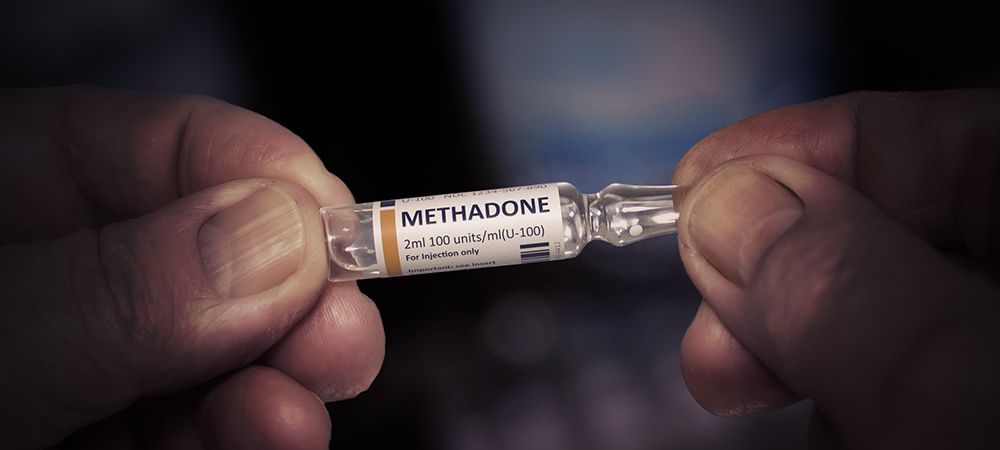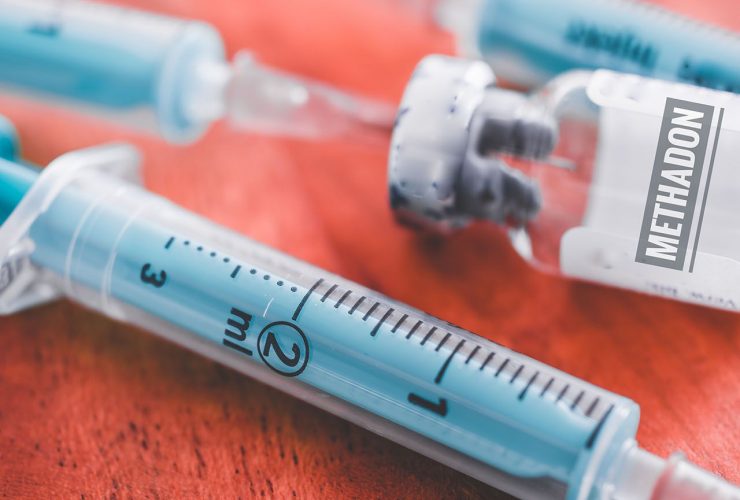Methadone: Uses, Side Effects and Risks
Before now, methadone treatments for opioid addiction were not common. Today, several treatment centers apply methadone treatment techniques to help patients recover from opioid addiction.
Seeing that methadone is an opiate, many people wonder why it’s useful for treating opioid addiction. Here is a little about the methadone substance.
Methadone belongs to a group of drugs known as opioids. Opioids are a group of drugs used to relieve patients of chronic pain. Legally, only a doctor can only prescribe the drug. But, it’s not rare to find it in the street.
The wide availability of opioids in the street makes it easy for people to get addicted to the drugs. Once they become addicts, there is a need to remove the opioid substance from their system. One common way doctors do this is using methadone — another opioid.
Clearly, there is a lot to discuss concerning methadone. In this article, we’ll highlight the uses of methadone, possible risks and side effects.
Methadone: Uses, Dosage and Side effects
Every opioid attaches to pain receptors in the brain to block pain signals. After a while, the body neglects the natural mechanism for blocking pain signals and adopts the artificial mechanism. When this happens, it’s safe to call the patient an addict.
To help the brain remember the natural pathways of blocking pain signals, doctors use methadone for opioid addiction treatment. Methadone binds with pain receptors in the place of opioids, leaving opioids with no receptor to bind to. With this, there are free opioids in your circulatory system waiting for flushing.
Although simple, using methadone for opioid addiction treatment is not as simple as it seems. You’ll have to visit a methadone clinic before you start using the drug. If you don’t, you may end up becoming a methadone addict while battling opioid addiction.
There are different methadone doses for different groups of people. Before we delve into that, here is what to know about taking methadone.
Different from what you know, taking methadone is not as safe as other opioids. Although mild, methadone can be very addictive if taken without the doctor’s prescription. Most especially, taking methadone intravenously can be more addictive. Hence, we don’t advise patients to take the drug on their own.
Also critical to note is the use of methadone for acute pain. That is, methadone can only be used for long-term pain treatment and not short-term treatment.
Who should not take methadone?
Not everyone can use methadone. Below is a list of people who should stay away from the medication;
People with kidney problems

If the body can’t get rid of it naturally, there may be high levels of methadone in the body, leading to an overdose.
Pregnant or breastfeeding mothers
There are no studies that suggest the effect of methadone on pregnant women—however, children born to mothers who used methadone may experience neonatal withdrawal symptoms.
For breastfeeding mothers using methadone, it’s rare, but the medication can pass through their breast milk to their children. Once this occurs, the child may start exhibiting symptoms like slowed breathing and sedation.
People with liver problems
The liver is the major organ of drug metabolism in the body. If you have liver problems, there’d be difficulty processing methadone in your system. Consequently, the concentration of methadone in your system will be higher than normal.
People with gastrointestinal obstruction
Methadone use causes constipation and increases the risk of gastrointestinal obstruction. If underlying, using methadone can escalate these problems. Your best bet? Talk to your doctor about possible risks if you have a gastrointestinal obstruction.
People with breathing problems
Methadone use can cause breath-related issues like shortness of breath and faintness. If you have asthma, we don’t advise you to use methadone. If necessary, ensure you see a doctor before using methadone.
People with brain Injury
One common effect of methadone is the increased pressure in the head. This increased pressure can cause migraines and headaches. If you had a recent head injury, we don’t advise you to take methadone. Taking methadone can cause further complications or even death.
Related Article: What is a Methadone Treatment Program?
Methadone Doses and Usages
Before doctors prescribe methadone for treatment, they consider some factors.
- Your age
- The form of methadone you take
- Your condition’s severity
- Other underlying medical conditions.
Most times, doctors start on low doses before adjusting it to the right dosage. To start seeing methadone effects, doctors taper the concentrations of other opioids in your body. They do this to prevent accidental overload of the substance on your body system.
Methadone use can only be orally or intravenously, and it’s suitable for people older than 18 years. Most preferably, doctors only recommend methadone for pain treatment to people within 18 years and 65 years.
Are there side effects to using Methadone?
Just like other drugs, methadone has some side effects, and they can be mild or severe.
The following list comprises the side effects of methadone use ranging from its common to severe side effects.
Common side effects
- Sleepiness
- Constipation
- Vomiting
- Nausea
- Headache
- Tiredness
- Stomach pain
- Dizziness
We often advise addicts to contact a doctor if they experience any of the side effects below while using methadone.
Respiratory failure
- Shortness of breath.
- Faintness.
- Lightheadedness
- Confusion
- Dizziness
- Chest pain
- Difficulty swallowing
Orthostatic Hypotension
- Low blood pressure
- Faintness
- Difficulty standing upright after sitting down
That said, other side effects are the same as methadone withdrawal symptoms. You’ll experience these withdrawal symptoms because of your body’s adjustments to low levels of opioids in it.
Some of these withdrawal symptoms include:
- Restlessness
- Trouble sleeping
- Fast heart rate
- Teary eyes
- Running nose
- Chills
- Sweating
- Irritability
- Disabled pupils
- Muscle aches and backache
We must mention that mild methadone side effects only last for a few days. If you don’t feel better after a few days, ensure you see a doctor at a certified methadone clinic.
Coping with the Side Effects
Below, we list some side effects of using methadone and tips on how to cope with them.
Mild headache
Headaches are due to imbalanced water concentration or electrolyte levels in the brain. To help you, ensure you take a moderate amount of water in your first week of methadone treatment.
You can also ask your pharmacist for painkillers only in the first week. If pain persists after a week, ensure you communicate it with the pain clinic.
Constipation
You can help improve constipation symptoms by eating more fruits and vegetables. Also, you can drink several glasses of water daily. If symptoms persist, ensure you see a doctor on how to improve constipation due to methadone treatment.
Dizziness
Dizziness during methadone treatment usually wears off in a week or two. You can just improve it by resting and sleeping more.
Unstable internal temperature
Most people feel cold and hot during their methadone treatment procedure. Feeling both cold and hot is normal during methadone treatment and can only last a couple of days. If this persists, there may be a need to readjust your methadone doses.
Dry nose, mouth and eyes

Methadone Treatment Programs
While methadone is an option for treating opioid addiction, the treatment must happen in a methadone clinic. Opioid addiction treatment in a methadone clinic allows for standard treatment under standard conditions.
In a methadone clinic, there are fewer risks of withdrawal symptoms during treatment. Methadone clinics offer two different types of treatment programs, namely:
In-patient
In an In-patient program, patients are under close medical supervision. That is, they are in a building where they recover safely.
There are so many activities staff engage patients in within an inpatient program. All of these activities aim at helping patients adopt new healthy lifestyles. Some of these activities include mediation and book-reading. For some clinics, patients can learn other skills or even build their physical health.
The major advantage of an in-patient program is the confinement they offer. In-patient programs separate patients from their triggers. If in contact with a trigger, patients can suffer relapses.
Although expensive, inpatient programs offer a higher success rate than other treatment programs.
A typical day in a clinic is not activity-packed as people think. There is an organized structure of activities to help individuals recover. And in between the activities, there are breaks where patients can rest.
Out-patient
Unlike the in-patient program, outpatient programs offer addicts the freedom to schedule a meeting with the doctor. This freedom is an advantage as patients can return to their daily routine while undergoing a treatment program.
In an outpatient program, doctors recommend drugs to patients for usage. Patients come either weekly or monthly so the doctor can monitor the drug process. However, doctors are not able to monitor the drug process efficiently. Hence, there can be cases of relapse.
Frequently Asked Questions on Methadone Use
Here’s what you need to know:
What’s the importance of a urine test during methadone treatment?
A urine test during methadone treatment is to detect the level of methadone in the system. In some cases, a urine test can detect the levels of opioids in the body.
Is methadone prescription only for addicts?
No, methadone prescription is not only for addicts. Just like other opioids, methadone prescription can be for chronic pain too.
Are there drugs that reduce the effect of Methadone drugs?
Yea, there are. Often, we advise patients to avoid antifungal drugs, Benzodiazepines, and Zidovudine. These drugs increase your risks of side effects.
What do you do if you miss a dose?
Depending on what you’re treating, missing a dose can be insignificant. If you’re using methadone for pain relief, you can take the missed dose then wait for 8 hours before taking the next one. If it’s for opioid addiction, no need to fret. You can continue the missed dose the next day.
How do you tell if Methadone is working?
Methadone aims at reducing pain. So, decreased pain and reduced symptoms are effective ways to tell if the drug has worked.
Related Article: Guide to Methadone Clinics
To Wrap It Up
Methadone treatment is a medication-assisted therapy for opioid addiction treatment. The treatment comes with several challenges in the form of side effects.
Some of the side effects of methadone treatment are sleepiness, tiredness and stomach pain. These symptoms can be severe and can result in hallucinations or even death.
However serious methadone side effects can be, there’re ways to manage them. In this article, we discuss the effective ways to manage methadone effects. Also, we discuss the effects of methadone long-term usage.
Long-term usage of methadone substances can result in methadone addiction. It’s why we often advise patients never to use methadone without a doctor’s prescription.
We don’t undermine the role of professionals in a methadone clinic. You deserve the best treatment program with professional staff and equipment. Here at Inspire Change Wellness Centre, we promise affordable, comprehensive methadone programs. Contact us today to discuss your options!




